Fashioning Yourself!
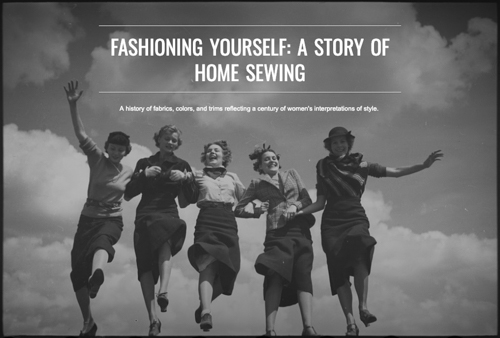
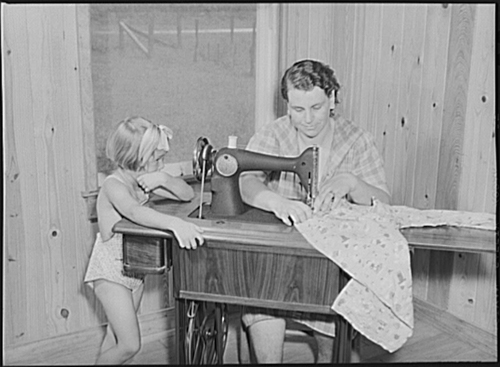 Mother and daughter making clothes for the family (Jun 1940)
Mother and daughter making clothes for the family (Jun 1940)
A History of Home Sewing
Fashion is more than just clothing. It's a form of self expression. Choices in clothing, style, and accessories express the wearer's personality and sense of self. Fashion choices place one within a cultural context as an insider, outsider, or outlier.
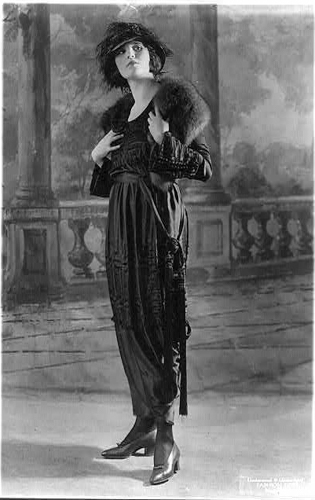 A frock of Moon Glo Satin B / Library of Congress (c1919)
A frock of Moon Glo Satin B / Library of Congress (c1919)National Women’s History Museum
Affordability and Availability
Fashion magazines, catalogs, and department stores brought fashion awareness in the 19th century to increasingly larger audiences up and down the economic ladder. Innovations like the sewing machine, paper patterns, and factory-produced textiles made fashion ever more affordable. By the turn of the 20th century, fashion as a lifestyle choice permeated American culture. Technology democratized fashion.
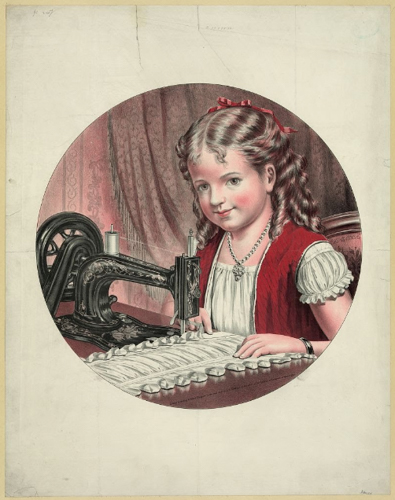 [Child at sewing machine] (1871)
[Child at sewing machine] (1871)National Women’s History Museum
The technologies that created new markets for fashion enabled clever, creative women to design and construct fashionable wardrobe items at home. Sewing ephemera shows the rich history of home sewing.
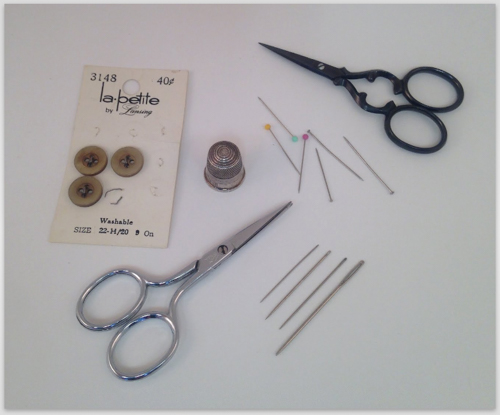 Sewing Notions
Sewing NotionsNational Women’s History Museum
Making fashionable clothing at home allowed women to express their fashion ideas. Choices of fabrics, colors, and trims reflected their interpretations of style. Home sewing enabled women to suit themselves.
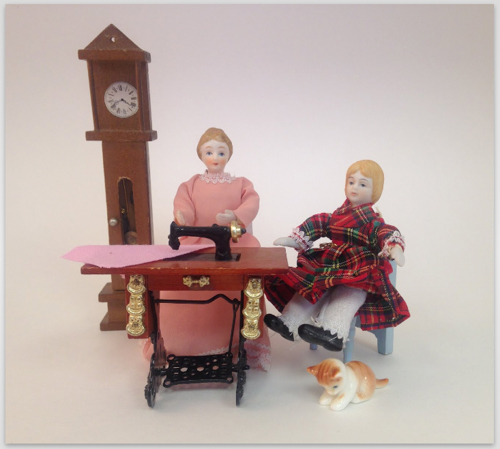 Dolls Sewing
Dolls SewingNational Women’s History Museum
Mass Production
19th century Americans looked to Paris for fashion, which was, even then, the world's fashion epicenter. Capitalizing on technological innovations in printing and distribution, fashion magazines communicated the latest trends.
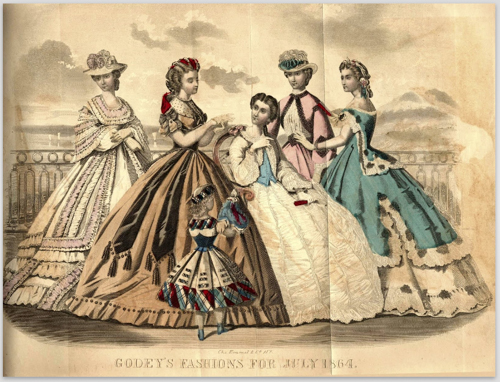 Godey's Lady's Book Fashion Plate (Mar 1864)
Godey's Lady's Book Fashion Plate (Mar 1864)National Women’s History Museum
The mid-19th century invention of paper patterns revolutionized fashion. Suddenly, fashions could be copied precisely. Dressmakers used them to execute the latest looks for well-off clients. Or, for less money, dressmakers could be engaged to cut out the pieces to be sewn at home.
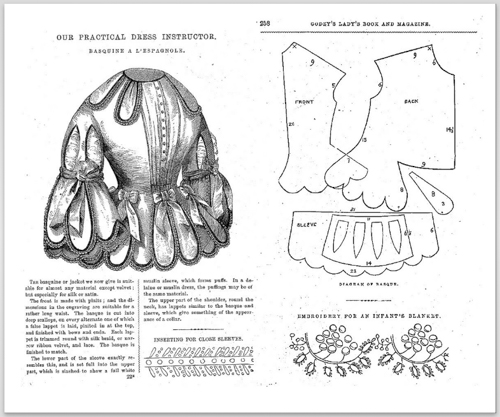 Godey's Lady's Book Pattern Basquine a l'Espagnole (Feb 1857)
Godey's Lady's Book Pattern Basquine a l'Espagnole (Feb 1857)by Godey's Lady's Book
National Women’s History Museum
Mass-produced men's clothing became widely available following the Civil War. Women's fashionable clothing remained in custom production through the end of the century, crafted by professional dressmakers and by home sewers as well.
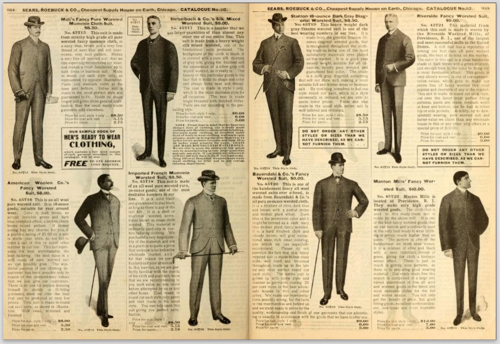 Sears, Roebuck Catalogue (1902)
Sears, Roebuck Catalogue (1902)by Sears, Roebuck Catalogue
National Women’s History Museum
While the sewing machine was invented before the Civil War, it was not until afterwards that manufacturers produced lighter domestic versions. Companies pursued middle-class housewives as buyers, assuring them that new technology would lighten their housekeeping burdens
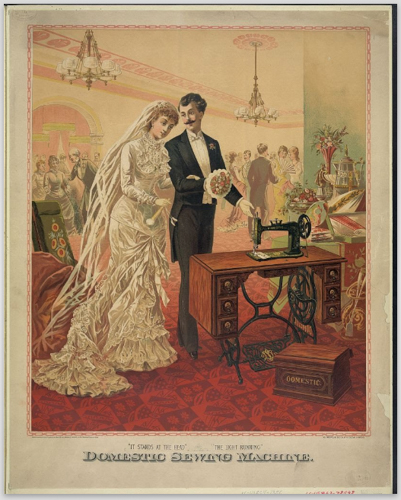 Domestic Sewing Machine / Library of Congress (1881)
Domestic Sewing Machine / Library of Congress (1881)by W.J. Morgan & Co. Lith. Cleveland, O.
National Women’s History Museum
Changing Roles Changing Fashion
Women's changing roles changed fashion. The shirtwaist blouse became popular at the turn of the century. Modeled on menswear, it was a stylish and practical addition to both working and professional women's wardrobes.
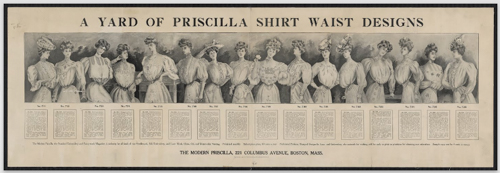 Shirt Waist Designs
Shirt Waist DesignsNational Women’s History Museum
It became symbolic of a new kind of Progressive Era woman: one who worked and was self-supporting.
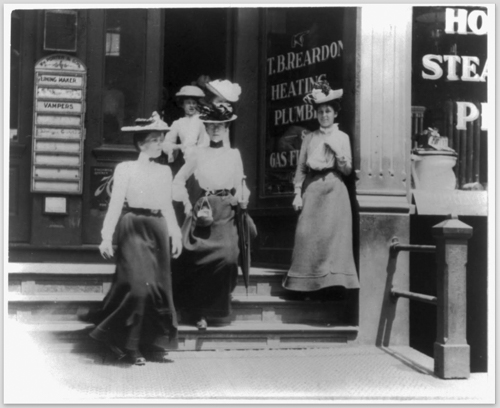 Women Coming from Work / Library of Congress (1903)
Women Coming from Work / Library of Congress (1903)by Frances Benjamin Johnston
National Women’s History Museum
The shirtwaist lent itself to mass production. At its height of popularity, more than 450 factories employed 40,000 garment workers to sew shirtwaists. It was among the first ready-to-wear garments produced for women.
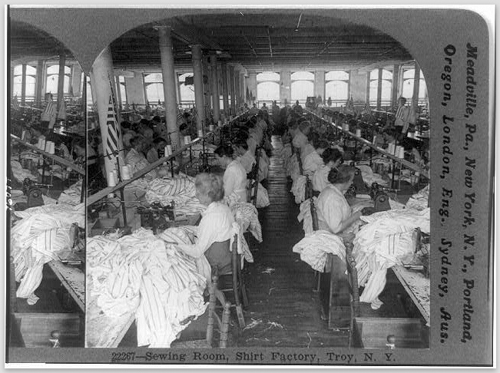 Sewing room, shirt factory, Troy, N.Y. (c1907)
Sewing room, shirt factory, Troy, N.Y. (c1907)by Keystone View Company.
National Women’s History Museum
Even as women's ready-to-wear hit the market, women continued to sew at home. Store-bought clothing was more expensive than the equivalent fabrics and notions. The hours of sewing time weren't factored into the cost.
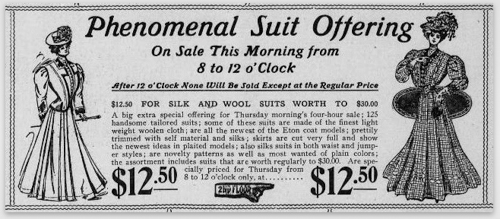 Los Angeles herald., May 09, 1907, Page 3, Image 3 (May 9, 1907)
Los Angeles herald., May 09, 1907, Page 3, Image 3 (May 9, 1907)by Los Angelas Herald
National Women’s History Museum
Individualization
The emerging paraprofessional workforce of clerks and office assistants often found themselves clothing poor. Like the department store clerks below, their jobs required a professional wardrobe. But many lacked time to sew their own. Meager wages left them chronically short on cash to invest in high quality, ready-made garments. Consequently, they cycled through disposable, fast fashion.
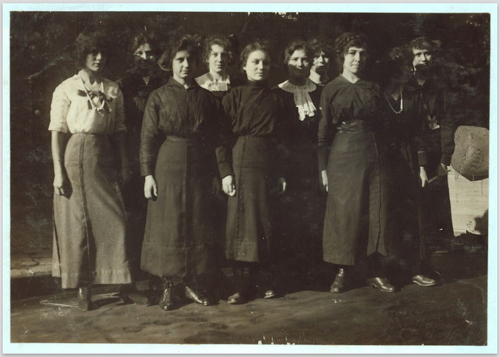 Cashiers in Holmes Department Store (Nov 1913)
Cashiers in Holmes Department Store (Nov 1913)by Lewis Wickes Hine
National Women’s History Museum
The predominantly Jewish garment workers of New York's Lower East Side developed a reputation for flashy interpretations of current styles. The "wide sidewalks show[ed] more fashion to the square foot on Sunday than any other part of the city," according to the New York Tribune. Skilled professional sewers, they collected scraps, purchased cheap fabric from pushcart vendors, and "Americanized" themselves through fashion.
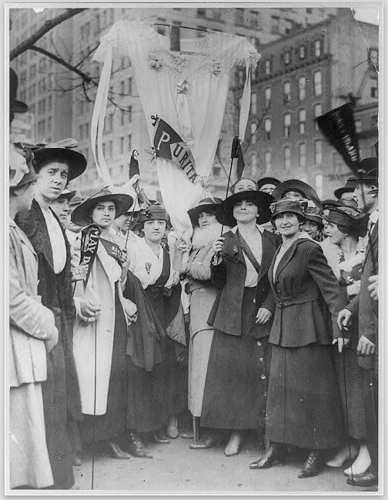 Garment workers parading on May Day, New York, ... (1916)
Garment workers parading on May Day, New York, ... (1916)National Women’s History Museum
Upwardly mobile African American women girded themselves with fashion. Spelman College's dress code required that skirts not "be too short or too narrow, and necks to be high enough to avoid any appearance of immodesty." Dress expressed character. Home sewing skills produced eminently respectable wardrobes.
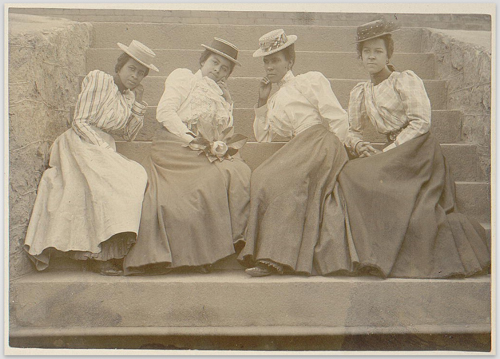 Four African American women seated on steps of ... (1899 or 1900)
Four African American women seated on steps of ... (1899 or 1900)by Thomas E. Askew, Untitled photo in album (disbound): Negro life in Georgia, U.S.A., compiled and prepared by W.E.B. Du Bois, v. 4, no. 362.
National Women’s History Museum
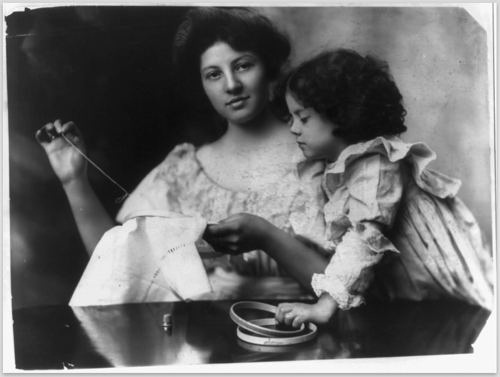 Her First Lesson in Embroidery / Library of Con...
Her First Lesson in Embroidery / Library of Con...National Women’s History Museum
From the Home
At the turn of the century, most women--of all social classes--knew how to sew, having learned from their mothers.
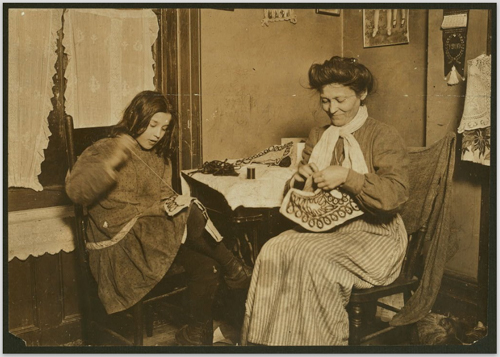 Making Embroidery (Feb 1910)
Making Embroidery (Feb 1910)by Lewis Wickes Hine
National Women’s History Museum
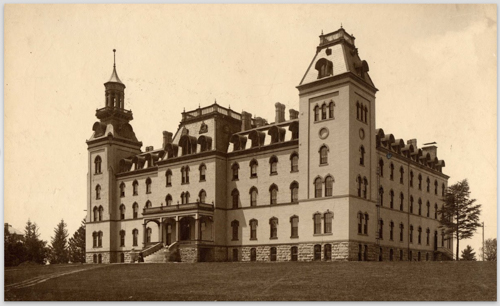 Old Main / Iowa State University (c1868)
Old Main / Iowa State University (c1868)National Women’s History Museum
To the Classroom
New educational opportunities for women emerged in the late 19th century. The field of Home Economics developed to teach women the science of housekeeping. Iowa State College offered the first Home Economics curriculum in 1871, which included cooking and sewing.
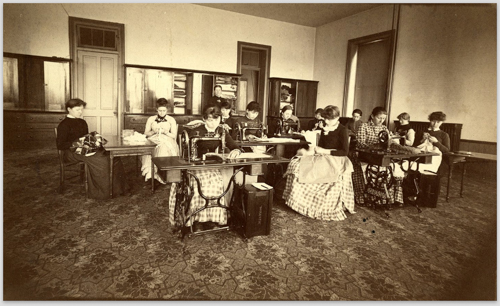 Sewing class in 1885 / Kansas State University (1885)
Sewing class in 1885 / Kansas State University (1885)National Women’s History Museum
The curriculum at industrial schools, such as Hampton Institute in Virginia, trained students in sewing and cooking to prepare them for jobs as seamstresses and maids.
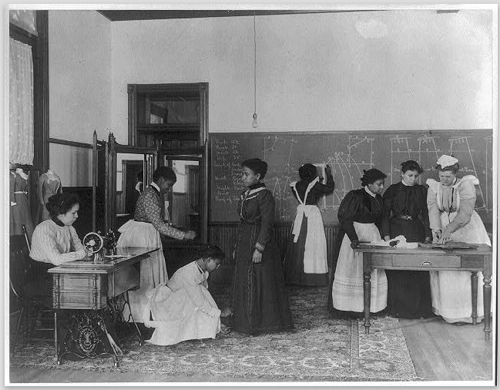 A class in dressmaking, Hampton Institute / Lib... (1899)
A class in dressmaking, Hampton Institute / Lib... (1899)by Frances Benjamin Johnston
National Women’s History Museum
By 1938-39 more than 90% of schools in cities and town with populations of 2,500 or more had Home Ec programs. Of those schools, 90% required it for seventh and eighth grade girls and over 50% for high school.
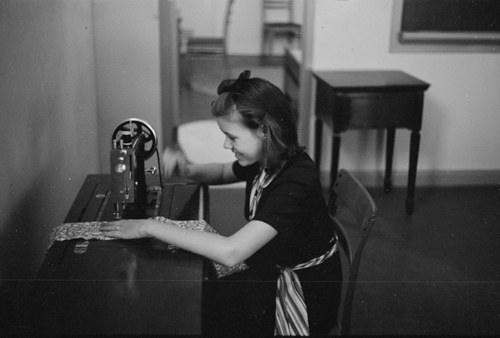 Girl sewing in home economics class (Oct 1938)
Girl sewing in home economics class (Oct 1938)by John Vachon
National Women’s History Museum
Sewing Simplified
The simplified silhouettes of the 1920s reduced the cost of manufactured clothing. An increasing number of women in the workforce decided that purchasing ready-made was easier than making at home. Marketing changed to emphasize the non-economic benefits of sewing at home, especially the higher quality and better fit of home sewn clothes.
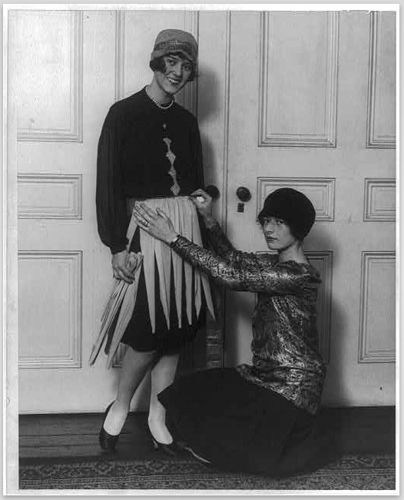 Debs Prepare for Bal Boheme / Library of Congress (c1920-1932)
Debs Prepare for Bal Boheme / Library of Congress (c1920-1932)by National Photo Company
National Women’s History Museum
Hollywood boosted American fashion through the signature looks created for the glamorous stars of the 1920s and 30s by studio designers. Women eagerly copied styles popularized by their favorite stars, like Joan Crawford below, reenergizing home sewing.
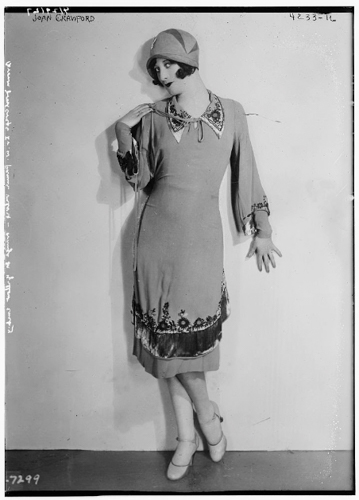 Joan Crawford / Library of Congress (Apr 29, 1927)by Bain News Service, publisher
Joan Crawford / Library of Congress (Apr 29, 1927)by Bain News Service, publisherNational Women’s History Museum
Making Do
World War II brought a pause to home sewing. Sewing machine factories retooled for war production, and fabrics became scarce as supplies were redirected towards the military. Some women patriotically donated their old machines to scrap iron drives, like the one below.
Making Do
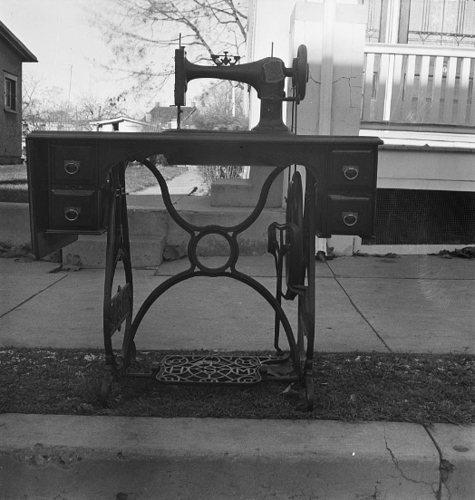 Sewing Machine (1942)
Sewing Machine (1942)by Marjory Collins
National Women’s History Museum
Government campaigns encouraged women to remake, mend, and make do. Fashion embraced styles that used the least amount of fabric. The woman below demonstrates how to cut a dress using minimal material.
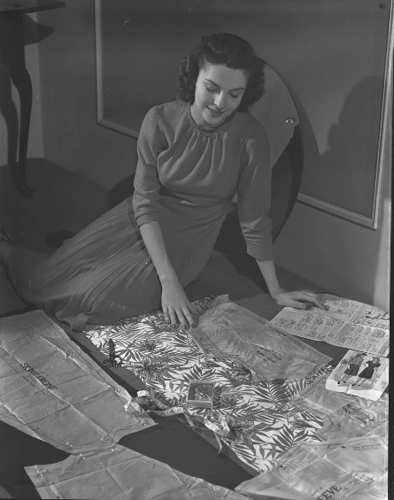 1943 Fabric Saving Dress Pattern / Library of C... (1943)
1943 Fabric Saving Dress Pattern / Library of C... (1943)National Women’s History Museum
Fitting In
A post-war shift towards conformity emphasized the importance for women to socialize and fit in. Popular media further encouraged a vision of the American woman's ideal lifestyle characterized by the need for an extensive wardrobe. The right kinds of clothing were critical to social acceptance.
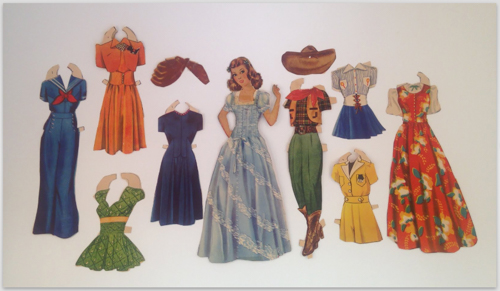 Paper Doll Set (circa 1942)
Paper Doll Set (circa 1942)by Unknown Publisher
National Women’s History Museum
Shifting Markets
Sewing marketing in the 40s and 50s identified a new consumer: the American teenage girl. Starting in 1946, Singer—the country's largest sewing machine manufacturer—ran a 20-year campaign offering the Singer Teen-Age Sewing course to girls aged 12 to 17. Advertising sold home sewing as the creative, cost-effective pathway to a wardrobe sure to ensure a busy social calendar and snag the ideal boyfriend.
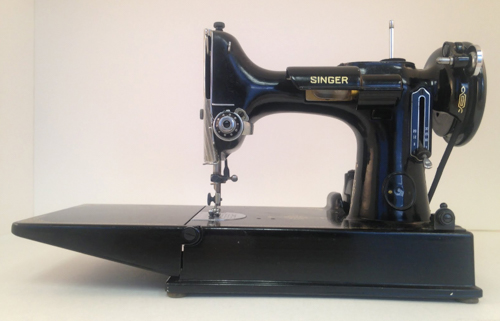 Singer Sewing Machine (1955)
Singer Sewing Machine (1955)National Women’s History Museum
Home sewing reached its high point in 1958. Increased leisure time, on-going sewing instruction in schools, and culture encouraged sewing as a hobby.
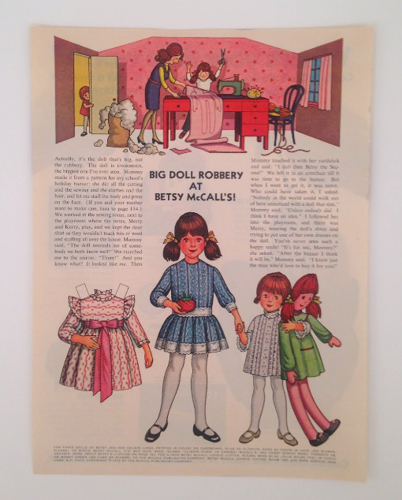 Betsy McCall Paper Doll (1972)
Betsy McCall Paper Doll (1972)by McCall Publication Company
National Women’s History Museum
Aprons, like this one, were a common first Home Economics project.
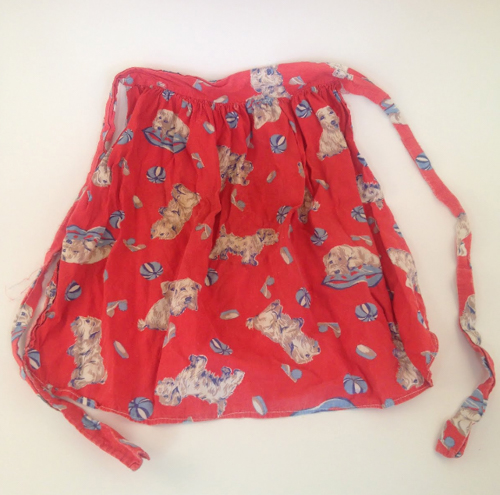 Handmade Apron (c1940s)
Handmade Apron (c1940s)by Eleanor G. Brock
National Women’s History Museum
Pattern companies stayed up to date in the 1950s with fashion, recognizing that customers primarily sewed for pleasure and self-expression.
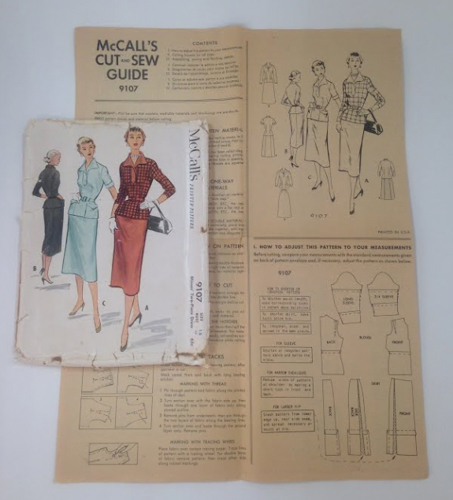 McCall's Pattern 9107 (1952)
McCall's Pattern 9107 (1952)by McCall's Patterns Co
National Women’s History Museum
Homemade fashion followed all of the popular trends, which continued to be dominated by Hollywood and celebrities.
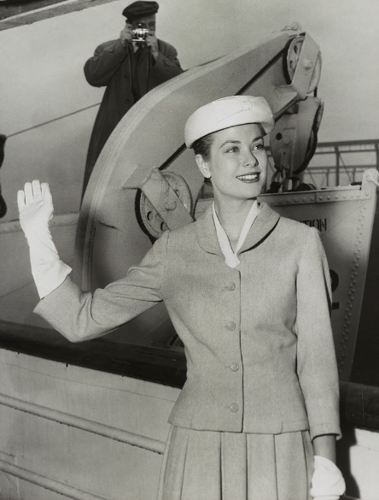 Radiant-looking Grace Kelly waves good-bye to N... (Apr 4, 1956)
Radiant-looking Grace Kelly waves good-bye to N... (Apr 4, 1956)National Women’s History Museum
Going Out
The 1970s saw a steep decline in home sewing. Pattern and sewing companies stressed individuality and original fashions at a reduced price to entice customers.
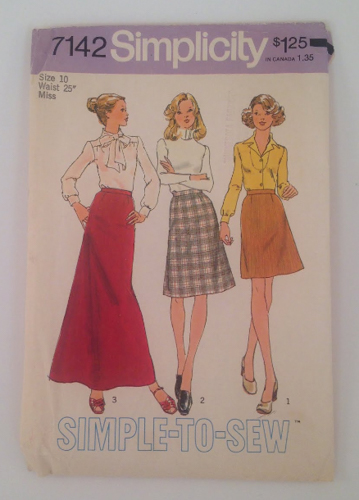 Simplicity Pattern 7142 (1975)
Simplicity Pattern 7142 (1975)by Simplicity Pattern Co, Simplicity 7142 "Simple-To-Sew Misses' and Women's Skirt in Three Lenths Size 10 Waist 25"
National Women’s History Museum
But they were fighting a losing battle for women's precious leisure hours. As women controlled more of their own incomes, shopping became a recreational outlet rather than a chore.
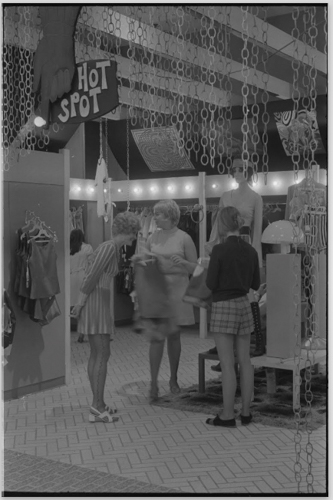 Women Shopping Hecht Department Store / Library... (Apr 22, 1971)
Women Shopping Hecht Department Store / Library... (Apr 22, 1971)by Marion S. Trikosko
National Women’s History Museum
As more and more entered the professional workforce, making clothing was seen as an uneconomic use of time.
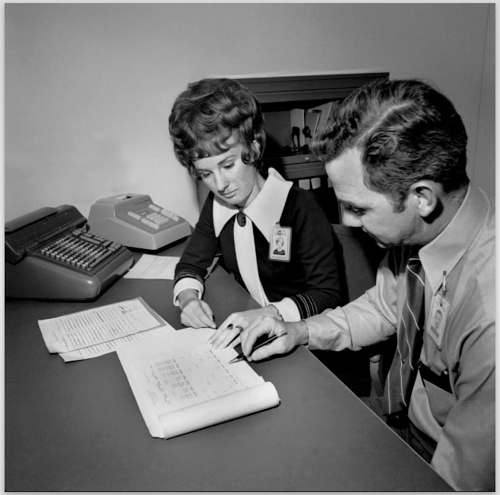 Series Federal Women's Program Oak Ridge / Depa...
Series Federal Women's Program Oak Ridge / Depa...National Women’s History Museum
New Hobby
By the 1980s, commercial clothing production had migrated to countries with lower labor costs. The cost of sewing a garment at home in 1985 was higher than purchasing one ready-made in a store.
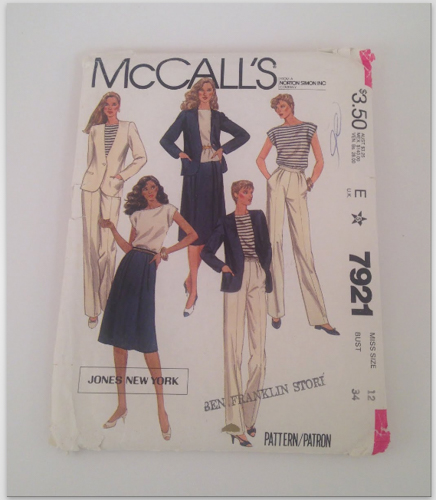 McCalls Pattern 7921 (1982)
McCalls Pattern 7921 (1982)by McCall's Patterns Co
National Women’s History Museum
Sewing became a leisure activity. Whereas in the 1920s, the majority of women who sewed did so to save money. In the 1980s, middle and high-income women sewed more often than low-income women.
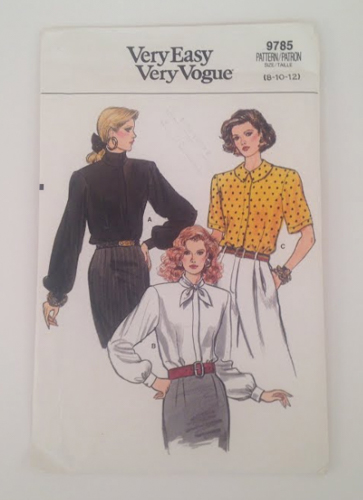 Vogue Pattern 9785 (1986)
Vogue Pattern 9785 (1986)by Butterick Company
National Women’s History Museum
Today, arts and crafts—including sewing—remains a popular hobby for women. The DIY and handmade movements encourage young girls to learn handiwork skills.
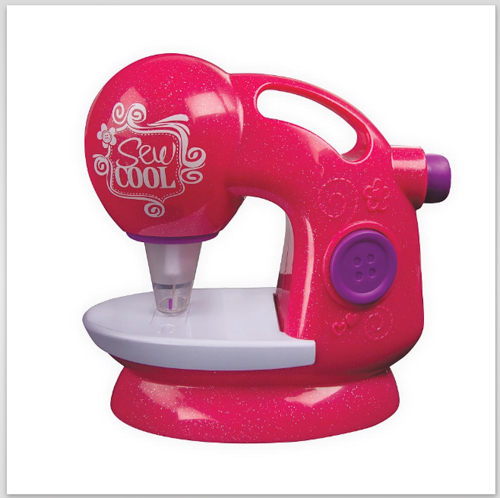 Sew Cool Child's Sewing Machine (2016)
Sew Cool Child's Sewing Machine (2016)National Women’s History Museum
Home sewing has experienced a recent resurgence, especially among professional women—and men—motivated by quality, originality, and fit. Domestic sewing machine sales topped 3 million in 2012. Venerable McCall's continues to issue 700 new patterns a year under four imprints.
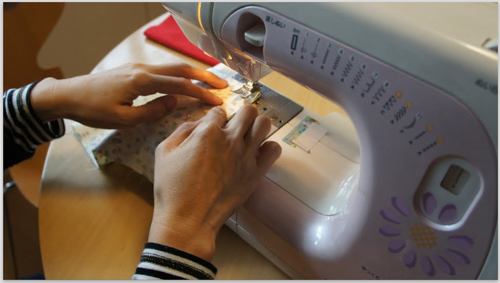 Sewing Machine and Housewife (Jan 22, 2015)
Sewing Machine and Housewife (Jan 22, 2015)by liccastyle-716132
National Women’s History Museum
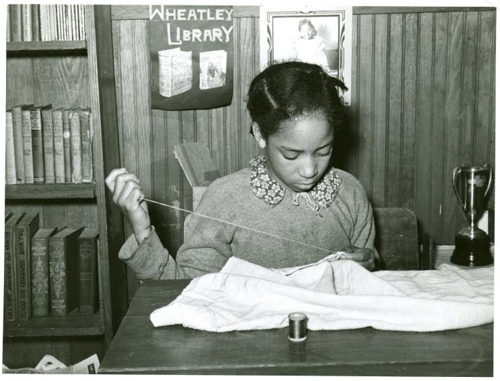 Daughter of Pomp Hall Sewing in School (1940)
Daughter of Pomp Hall Sewing in School (1940)by Farm Security Administration Collection.
National Women’s History Museum
Home sewn fashion remains an American tradition.
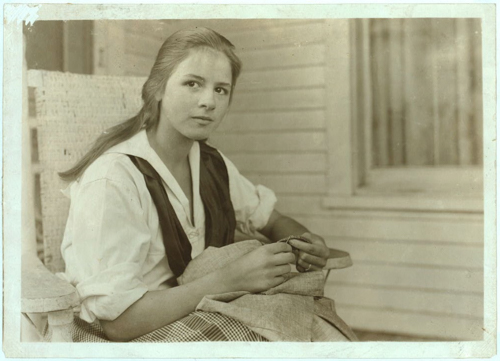 Betsey Price / Library of Congress (Oct 7, 1921)
Betsey Price / Library of Congress (Oct 7, 1921)by Lewis Wickes Hine
National Women’s History Museum
Credits
National Women's History Museum
Director of Program - Elizabeth L. Maurer
Program Manager - Jeanette Patrick
